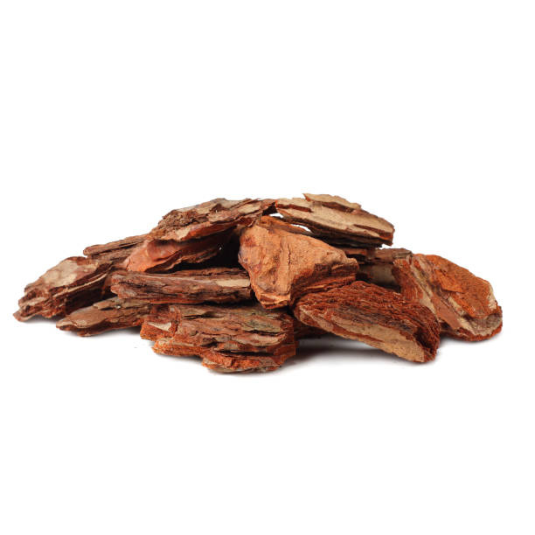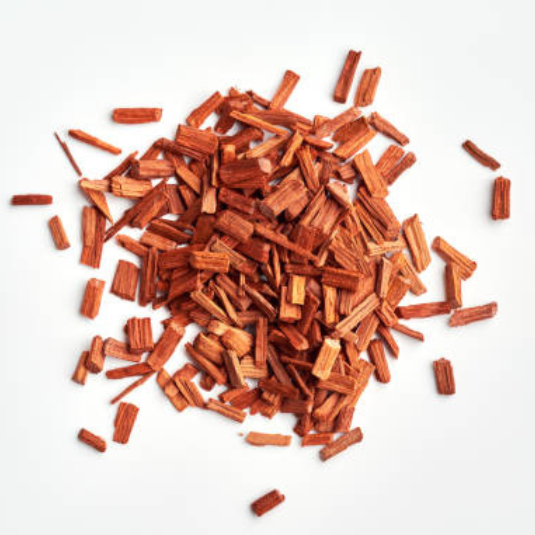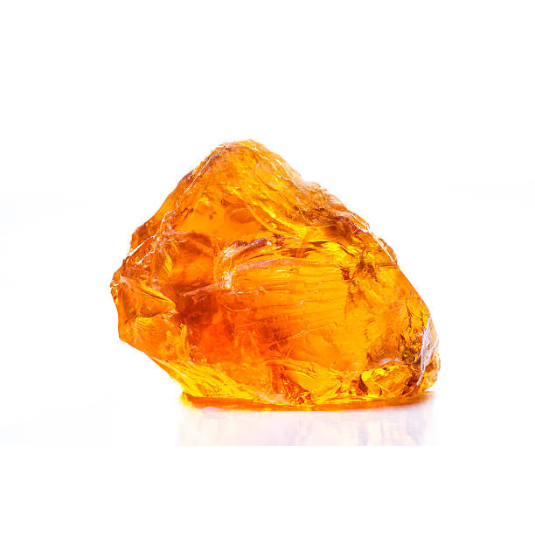What does cedar mean?
The cedar is a majestic tree that can reach heights of up to 40 meters. It belongs to the Pinaceae family and is mainly grown in the mountainous regions of the Himalayas, Lebanon, Algeria and Turkey.
The etymology of the word "cedar" comes from the Latin cedrus, meaning "resinous tree". This Latin name was borrowed from the ancient Greek κέδρος (kedros), which also referred to the tree.
In the beginning...
The cedar is a tree whose history goes back thousands of years. It has been known since antiquity for its medicinal properties and resistance to decay. Cedar was considered a symbol of strength and prosperity, and was often used in the construction of temples and palaces. The Egyptians used its essential oil to embalm their dead, and the Phoenicians used it to build their ships. The Romans used its wood as a building material. In the Middle Ages, it was introduced to Europe and became a symbol of prestige and wealth.
In perfumery, cedar has been a key ingredient for centuries, bringing its warm, woody, resinous scent to many fragrances.
Even today, it remains an element of choice for perfumers in search of warm, enveloping notes for perfumes and home fragrances.
Cedar cultivation
The cedar is a majestic tree that requires a specific environment for its cultivation. Mountainous regions with a continental or Mediterranean climate are best for its growth. Moreover, cedar requires well-drained, nutrient-rich soil for optimal cultivation.
Cedar-growing regions are mainly located in mountainous areas, such as the Himalayas, Lebanon, Algeria and Turkey. Atlas cedar, native to Morocco, is also prized in perfumery for its warm, woody fragrance.
This majestic tree can be grown from seed or cuttings, but the most common method is to plant young trees. The soil must be well-drained and rich in nutrients. Once planted, cedars need regular watering, especially during the first few months of growth, as well as regular pruning to encourage healthy growth.
Cedar is a precious essence widely used in the perfume industry. Its development for this use is a meticulous process requiring a combination of expertise, know-how and respect for the environment. Perfumers look for cedars with unique olfactory characteristics, rich in warm, woody notes. The trees must be carefully cultivated and harvested in a sustainable way, guaranteeing the preservation of this natural resource. Thanks to its distinctive fragrance and versatility, cedar continues to play an essential role in the development of refined, timeless perfumes.
Harvesting cedar is a delicate process that requires special expertise to preserve the wood's distinctive quality and fragrance. Mature trees are generally felled during the winter months, when they are dormant. The wood is carefully cut and sorted to avoid cracks and damage. Once the wood has been cut into planks, it is stored in a dry, well-ventilated area for slow, even drying.
What do you know about cedar in perfumery?
Treating and processing cedar for perfumery is a meticulous process that aims to preserve the wood's natural fragrance while transforming it into a high-quality essence for the perfume industry.
The wood is first cut into small chips or thin planks, then distilled to extract the essential oil. This distillation process can be carried out by various methods, but the most common are steam distillation and solvent extraction.
After distillation, cedar essential oil is filtered and refined to remove impurities and obtain a pure, concentrated essence. This essence is then used in the manufacture of perfumes, cosmetics and personal care products, where it adds a fresh, woody note.
Cedar's aromatic profile is woody, fresh and slightly spicy, with hints of pine and soil. It's a dry, green, resinous scent that can be compared to the smell of a pencil.
Cedar essential oils are often used in fragrances for their distinctive scent and ability to balance floral and fruity notes. It is mostly used as a base note, as it has impeccable staying power.
Making a perfume with cedar requires several precise steps to obtain a top-quality essence. First, the highest quality cedar wood must be selected and processed to extract the essential oil. Once the essential oil has been extracted, it must be filtered and refined to obtain a pure, concentrated essence. Next, the perfumer works on the olfactory profile of the fragrance, combining it with other aromatic notes to create a balanced, pleasing composition. Finally, the perfume is filled into a bottle and ready to be marketed.
The olfactory accord with cedar is complex and sophisticated. In perfumery, cedar is often combined with woody or spicy notes to create a rich, warm fragrance, but it can also be used to bring a fresh, green note to a composition.
Perfumers need to take cedar's olfactory profile into account and combine it with other ingredients to achieve a balanced, pleasing composition. For example, Virginia cedar blends very well with flowers and fruit, as do patchouli, sandalwood and vetiver. In short, olfactory harmony with cedar is a complex art, requiring expertise and passion to create unique, timeless fragrances.
INTERESTING FACT!
Cedar has many benefits, particularly in the perfume, personal care, and construction industries. Its soothing and antiseptic properties make it a popular ingredient in body care products such as soaps and lotions, promoting healthy and nourished skin. Additionally, its wood is highly valued for its natural resistance to insects and decay, making it a reliable choice for various construction projects.
Some popular cedar perfumes…
Cedar, known for its aromatic and woody qualities, is a cherished ingredient in the compositions of renowned perfume brands. Some of the best perfumes that feature cedar in their formulations include Baccarat Rouge 540 by Maison Francis Kurkdjian, Infusion d'Iris by Prada, Cedrat Boise by Mancera, Byredo Super Cedar, and Club de Nuit Sillage by Armaf. These fragrances beautifully incorporate cedar, adding depth, warmth, and a touch of elegance to their olfactory profiles.
Here are some other fragrances that showcase cedar:
• Bleu de Chanel eau de toilette by Chanel: this men's fragrance is a blend of woody and spicy notes, with cedar adding a touch of freshness and elegance.
• Terre d'Hermès by Hermès: this men's fragrance is a blend of citrus and woody notes, with cedar bringing a touch of warmth and depth to the composition.
• Opium Homme eau de parfum by Yves Saint Laurent : combines woody and spicy notes to create a rich, sensual fragrance. Cedar, one of the key ingredients of this composition, adds a touch of depth and warmth that makes this fragrance unique and timeless.
• Bois de Cèdre Eau de Cologne by Frédéric Malle. This cologne harmoniously combines cedar essence with other notes to create an elegant, woody fragrance.
• Tam Dao eau de toilette by Diptyque is a unisex perfume that skilfully combines cedarwood essence and sandalwood to create a woody, warm and slightly spicy fragrance. It's a fragrance appreciated for its soothing character and sophistication.
• Amber & Cedar by Jo Malone. This unisex fragrance combines the warmth of amber with the woody richness of cedar, creating an elegant, bewitching scent. Base notes of amber, patchouli and myrrh add a sensual, suave touch, while cedar adds freshness and woody structure. This combination creates a captivating fragrance, perfect for lovers of warm, woody notes.
Cedar X Bon Parfumeur
Cedar is a key ingredient in our Bon Parfumeur men and women’s fragrances:

• Eau de parfum 101: Rose, sweet pea, white cedar. A fragrance for the queen of flowers: soft and fresh as a rose garden. The opening notes are green and spicy with cardamom. The heart notes are rose and sweet peas. Damask rose has been used in absolutes and essences. In the base, musk and white cedar bring a powdery softness. Cedar, with its woody, mellow and dry notes, offers great elegance: it's easy to recognize because it smells like pencil.
• Eau de parfum 401: Cedar, candied plum, vanilla. A fragrant liqueur with fruity and vanilla notes. A fresh, pungent trio of cypress, elemi and bergamot to start. Then plum reveals sweet, bewitching candied fruit tones, balanced by the elegance of cedar wood. Here, cedar dries out the plum's gourmand note, making it more candied and less sweet.
• Eau de parfum 601: Vetiver, cedar, bergamot. Timeless elegance in a bottle. Sparkling, fresh notes of bergamot, grapefruit and pink berry. In the heart, violet leaf adds a vegetal dimension. In the background, vetiver and cedar with their intense, rich woody facets. A chic, sophisticated olfactory signature.
• Eau de parfum 602: Pepper, cedar, patchouli. A woody, spicy and chic fragrance. From the very first seconds, we smell the spicy freshness of pink berry and black pepper, followed by the sweetness of neroli in the heart. In the base notes, essences of patchouli, vetiver and benzoin resin lend this fragrance all its power. Here, cedar boosts the spicy, fiery note of black pepper in the top note, and reinforces the power of patchouli in the base.
• Eau de parfum 801: Sea spray, cedar, grapefruit; a sea breeze. Like a breeze of sea spray caressing our faces, 801 is refreshing with its grapefruit notes. This breeze intensifies and makes the spices twirl: pink pepper and nutmeg add a hint of spiciness. Rows of cedar and cypress diffuse their sun-dried woody facets into the air. Here, cedar reminds us of wind-dried wood notes, or the scent of driftwood found on sand. These fusing notes boost the fresh facets of sea spray.



























